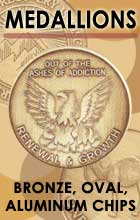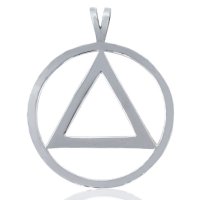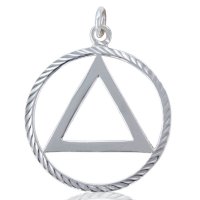Categories
Sponsors
What is AA?
| A Brief History of AA |
|
The pros and cons of alcohol have been argued over many centuries. While drunkenness was often met by public ridicule, hours of humiliation in the stocks, public whipping, fines or jail. It was also often used as a medication, to relieve pain, or it was drunk in place of contaminated water. It was, and still is, a powerful money-making commodity. In the early days of AA, alcoholism was not yet considered an official disease and would be not accepted by the American Medical Association as such until the 1950s. Since alcoholism was not considered a disease worth any long term treatment or focus, sufferers were typically "dried" out, stabilized, and then discharge from a doctor's care. Relapse was common and usually inevitable since no one really grasped why these people continued to drink. Relapse was seen by most people as a rational desire, and they did not understand the processes in the mind, body, and spirit. Alcoholics were just considered weak, as it was believed that lack of willpower was the only real thing preventing them from stopping. Bill Wilson was a man who seemed to have great things on his horizon on Wall Street, but ever since his days as a soldier in WWI, he had made drinking a daily habit. His alcohol consumption became so bad that it was preventing him from maintaining the success of his early accomplishments. Things became so bad for Bill W that he and his wife, Lois, were living on the charity of relatives and the community, and Bill W was reduced to begging on the streets. While being treated at Charles B Towns hospital in New York, Bill W was introduced to a fellow alcoholic, Ebby Thacher, who told him about a Christian movement called the Oxford Group, as well as the idea that alcoholism was a disease that needed specific treatment. While in the hospital, Wilson believed he had a spiritual experience that helped him stop drinking. After attending some Oxford Group meetings, is was convinced that mutual support was going to be the key to sobriety. On the evening of another spoiled business affair, Bill W was tempted to break his sobriety of five months at the bar in Akron, Ohio. He wondered if he might be able to maintain his own sobriety if he could help another drunk stop drinking. Out of desperation, Bill W calls a minister at random and asks for the names of drunks. As this is happening, Bill W finds himself looking back at the bar, tempted by the devil for another drink. Bill W was eventually given the number of a Dr. Bob, who was a chronic drunk. While the actual date of the establishment of AA is not known, it is the day Dr Bob took his last drink - the day that Bill W, who was on the verge of a relapse, saved Dr. Bob's life and thus his own. Bill W and Dr. Bob co-founded AA, although not yet named that, with a word of mouth program to help other alcoholics. It was determined that Bill W and Dr. Bob helped 40 alcoholics get sober by 1937, and 2 years later they had over 100 members. Bill W then wrote the book entitled Alcoholics Anonymous, of which the fellowship adopted the name, a book which is now referred to as The Big Book. It describes the 12 step program: admission of powerlessness over alcohol, acceptance of a benevolent higher power, moral inventory, complete and direct restitution to those harmed, and finally asking for direction, guidance, and power from God. It was the idea that a higher power be "of one's own understanding" that was the essential process. Favorable press on the radio and in magazines caused book sales and memberships to increase. Eventually, the organization became so large that Bill W wrote the Twelve Points to Assure our Future, known now as the Twelve Traditions, to help manage practices, finances, and publicity. By 2001 it was estimated that AA had 2 million members. |





